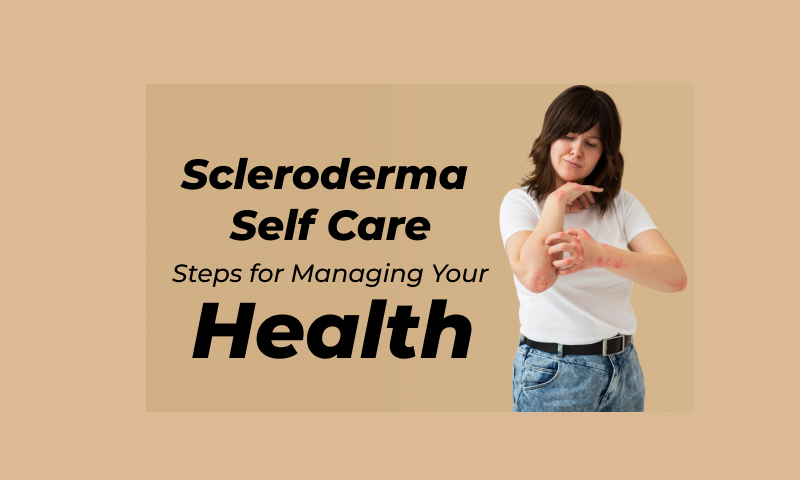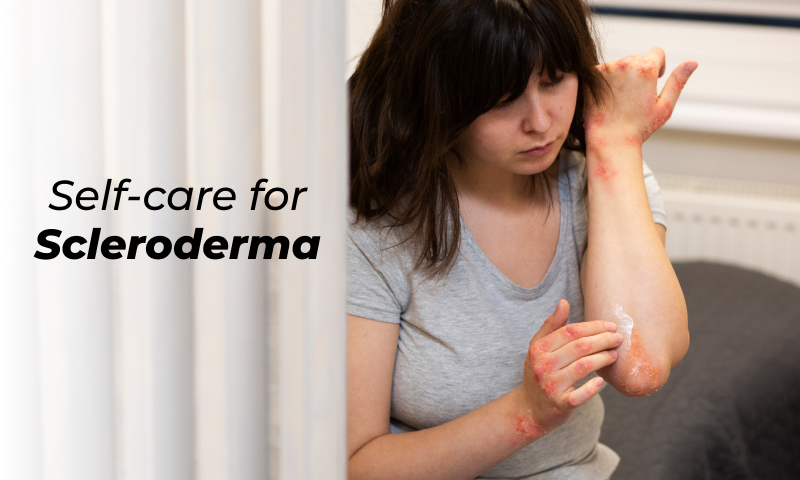Scleroderma is an autoimmune and chronic disease characterized by the skin and connective tissues becoming tight and hard. This condition can affect various parts of the body, leading to symptoms like skin thickening, joint pain, digestive issues, and, in severe cases, damage to internal organs. While there’s no cure for Scleroderma, self-care strategies are crucial in managing symptoms, improving quality of life, and slowing its progression. This comprehensive blog explores various Scleroderma Self Care practices and lifestyle modifications beneficial for individuals living with Scleroderma.
What is Scleroderma?
Scleroderma manifests in two major forms: localized and systemic. Localized Scleroderma affects the skin, causing patches of hardened skin. In contrast, systemic Scleroderma involves the skin and internal organs, such as the heart, lungs, kidneys, and digestive system. This systemic form can be further divided into limited and diffuse types, depending on the extent and rate of skin involvement.
Factors that Cause Scleroderma
- Autoimmune Dysfunction: We linked Scleroderma to an overactive immune system that attacks healthy tissues, leading to inflammation and abnormal collagen production.
- Genetic Predisposition: There’s a genetic component to Scleroderma, with certain genetic variations increasing susceptibility to the condition, especially when triggered by other factors.
- Environmental Triggers: Exposure to environmental factors like infections, certain chemicals, or toxins may act as triggers, starting or exacerbating Scleroderma in susceptible individuals.
- Blood Vessel Abnormalities: Problems with blood vessel function are common in Scleroderma, contributing to reduced blood flow and tissue damage.
- Hormonal factors: Especially in women, hormonal factors might contribute to the development of sclerostomy, although we do not fully understand the exact mechanisms.
Scleroderma Self Care Tips & Strategies
- Regular Skin Care
Moisturizing the skin is crucial to prevent dryness and cracking. Using mild soaps and moisturizers free from harsh chemicals helps maintain skin hydration. It’s also essential to protect the skin from extreme temperatures, using sunscreen to shield against sun exposure and avoiding very hot or cold conditions.
- Joint Mobility and Exercise
Gentle exercises and stretching routines can help maintain joint flexibility and prevent stiffness. Under professional guidance, physical therapy can help devise personalized exercise plans suitable for individual capabilities.
- Healthy Diet
A diet rich in fruits, vegetables, whole grains, and lean proteins that are balanced can support overall health. Some individuals with Scleroderma Self Care may benefit from dietary modifications to manage gastrointestinal symptoms. Consulting a nutritionist or a healthcare provider can help craft a suitable diet plan.
- Managing Gastrointestinal Symptoms
Scleroderma often affects the digestive system, causing symptoms like acid reflux, difficulty swallowing, and gastrointestinal discomfort. Eating smaller, more frequent meals, avoiding trigger foods, and elevating the head during sleep can ease these symptoms.
- Pain Management
Chronic pain is a common feature of Scleroderma. Pain management techniques, such as heat therapy, massage, and relaxation exercises, can help reduce discomfort.
- Stress Management
Stress can exacerbate symptoms of Scleroderma. Engaging in stress-reducing activities like meditation, yoga, or hobbies can aid in managing stress levels and promoting mental well-being.
- Regular Health Monitoring
Individuals with Scleroderma should maintain regular check-ups with healthcare providers to monitor the condition’s progression and address emerging issues.

Final Thoughts
Living with Scleroderma presents challenges that can significantly affect daily life. However, adopting scleroderma self care strategies and making lifestyle modifications can make a substantial difference in managing symptoms and enhancing overall well-being. By focusing on skin care, exercise, nutrition, pain management, stress reduction, and regular health monitoring, individuals can manage their condition and improve their quality of life. It’s crucial to work with healthcare professionals to develop personalized self-care plans tailored to individual needs and to stay informed about fresh developments in scleroderma management. With a proactive approach to self-care, individuals can better navigate the challenges of living with Scleroderma Self Care and strive for a fulfilling life despite the condition’s complexities.
Also Read : Reduce swelling easily during pregnancy
FAQs
What skin care practices help with Scleroderma?
Regular moisturizing, gentle cleansing, and protection from extreme temperatures.
Are there exercises beneficial for Scleroderma?
Yes, gentle stretching and low-impact exercises help maintain flexibility.
What dietary tips can help manage scleroderma symptoms?
A balanced diet with smaller, frequent meals and avoidance of trigger foods.
How can one manage scleroderma-related pain?
Heat therapy, massage, and relaxation techniques can help ease pain to a large extent in pregnant women.

